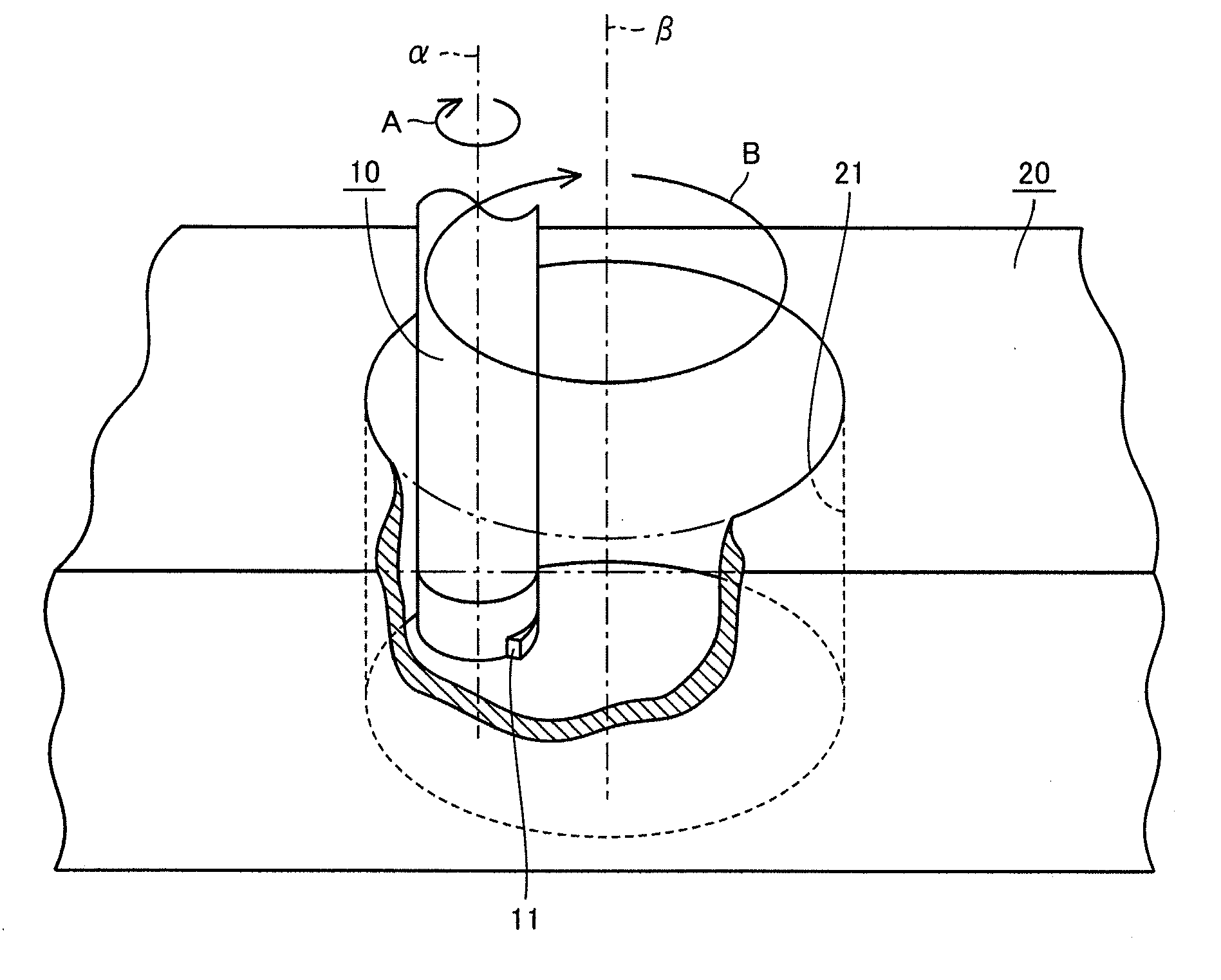Method for processing difficult-to-cut cast iron
- Summary
- Abstract
- Description
- Claims
- Application Information
AI Technical Summary
Benefits of technology
Problems solved by technology
Method used
Image
Examples
example 1
[0032]In the following, Example 1 will be described. An experiment was conducted in which a cutting insert formed of a CBN sintered body was used to perform inner-periphery contouring and continuous inner-periphery cutting on a workpiece made of FCD450 which is a difficult-to-cut cast iron, and examine influences, on the amount of wear of the cutting insert, of the processing method, the CBN content of the cutting insert, and the thermal conductivity of the cutting insert. Table 1 shows conditions under which inner-periphery contouring was performed and Table 2 shows conditions under which continuous inner-periphery cutting was performed. Further, Table 3 shows the CBN content and the thermal conductivity of the cutting insert as well as the amount of wear of the flank face of the cutting insert at the time when the volume of a swarf removed from the workpiece by cutting had become 50 cm3. Here, as the cutting insert, Model No. CNGA120408 was employed. Further, a binder which is a c...
example 2
[0036]Example 2 will be described next. An experiment was conducted in which a cutting insert formed of a CBN sintered body was used to perform inner-periphery contouring on a workpiece made of FC250 which is a difficult-to-cut cast iron, and examine influences, on the amount of wear of the cutting insert and generation of thermal cracks in the insert, of the average particle size of CBN and the thermal conductivity of the cutting insert, as well as the contact time for which the cutting insert and the workpiece contact each other and the noncontact time of the cutting insert and the workpiece. Table 4 shows details including cutting conditions, and Table 5 shows the average particle size of CBN constituting the cutting insert and the thermal conductivity of the cutting insert, as well as the amount of wear of the flank face and the number of thermal cracks of the cutting insert at the time when the volume of a swarf removed from the workpiece by being cut had become 50 cm3. Contact...
PUM
| Property | Measurement | Unit |
|---|---|---|
| Time | aaaaa | aaaaa |
| Time | aaaaa | aaaaa |
| Power | aaaaa | aaaaa |
Abstract
Description
Claims
Application Information
 Login to View More
Login to View More - R&D
- Intellectual Property
- Life Sciences
- Materials
- Tech Scout
- Unparalleled Data Quality
- Higher Quality Content
- 60% Fewer Hallucinations
Browse by: Latest US Patents, China's latest patents, Technical Efficacy Thesaurus, Application Domain, Technology Topic, Popular Technical Reports.
© 2025 PatSnap. All rights reserved.Legal|Privacy policy|Modern Slavery Act Transparency Statement|Sitemap|About US| Contact US: help@patsnap.com


